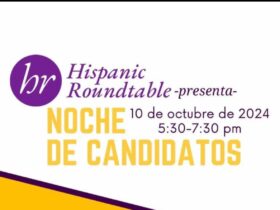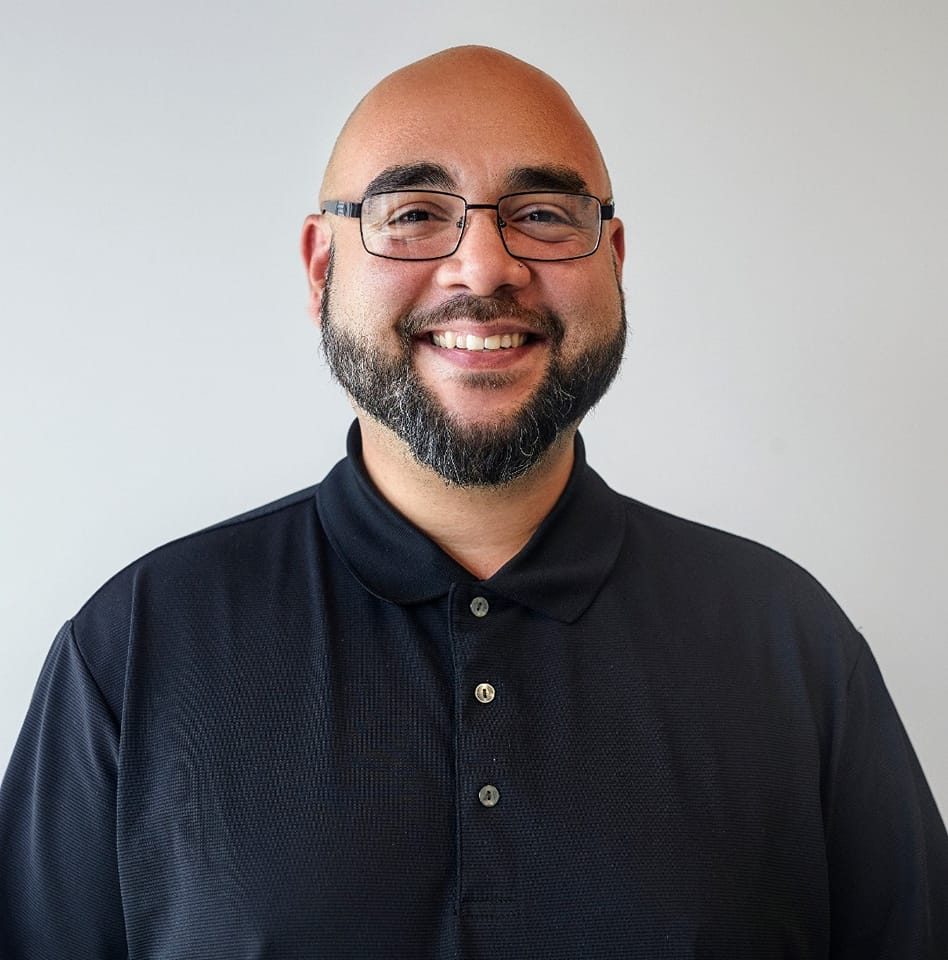My activism keeps me grounded. Whether I’m working on a neighborhood project, writing, or supporting initiatives like expanding Cleveland’s tree canopy
By: Ivan Gomez
Ronaldo Rodriguez Jr. is a community journalist and an emerging real estate professional with a deep passion for urban development, equitable transportation, and environmental sustainability. From the heart of Tremont in Cleveland, Ohio, Ronaldo not only reports on key community issues but actively engages in them. His commitment is reflected in his work as a steward of Seeds of Love, a local community garden, and as an active member of the West Side Creation Care Team, an ecumenical environmental ministry. Additionally, he leads as chairman of The Tremont History Project, ensuring that his neighborhood’s past is preserved while working toward a more just and inclusive future.
What inspired you to get involved in community journalism, and what impact do you hope to achieve with your work?
The first Cleveland Parks & Greenspace Coalition Park Advocate Night was my “aha” moment. It took place at Roberto Clemente Park on Seymour Avenue in October of 2023. I remember what the park used to be like, and seeing the resident-led improvements left me in awe. That night, the energy was nothing short of magical.
I couldn’t help but think, why isn’t everyone talking about this? The park’s leaders saw a need, took action, and transformed the space with their own hands. Their work wasn’t just about revitalizing a park – it was about bringing people together and reclaiming the community’s future. That moment made me realize that if I wanted more people to recognize and celebrate the change-makers in our neighborhoods, I needed to roll up my sleeves, too.
When I look at Cleveland’s Latino community, I see incredible talent, deep love, and perseverance – qualities that are often overlooked in mainstream media. I want to change the narrative by amplifying our stories and celebrating each other, showcasing the resilience and brilliance within our community. I want to share the feeling of pride I had that night at Roberto Clemente Park, and I want other’s to feel inspired too – to be the change they want to see in our city.
What are the main challenges Tremont faces in terms of urban development and sustainability?
While the Tremont neighborhood has seen significant investment – there are still many challenges that need to be overcome. First and foremost, not all residents have shared in its success and affordability is a major problem.
I don’t claim to have the answers, but I strongly believe that more must be done to strike a balance between development pressures and affordability. One key approach is prioritizing inclusive development and expanding middle housing options – ensuring that growth benefits all residents, not just those who can afford rising prices.
This means encouraging a diverse range of housing types including affordable and mixed-income developments, so that Tremont remains a neighborhood where people of all backgrounds and income levels can thrive.
Thoughtful urban planning that integrates affordability, sustainability, and community input is essential to fostering a more equitable future.
How do you balance your work in real estate with your community and environmental activism?
My day-to-day life is fairly unsegmented. I don’t see my roles as separate. I view them as complementary. All of my life’s parts fit together because they are driven by the same core values and rooted in community.
Real estate gives me insight into the challenges many of us face and opportunities for growth. I’m constantly reminded of our shared humanity – despite our differences.
My activism keeps me grounded. Whether I’m working on a neighborhood project, writing, or supporting initiatives like expanding Cleveland’s tree canopy, it all connects back to my desire to have a positive impact on those around me.
Seeds of Love is a key project in the community. How has it evolved, and what role does it play in transforming the neighborhood?
Seeds of Love, one of Tremont’s community gardens, was there long before me and I hope that it’s around long after. We’ve planted and cared for over a dozen trees and have been diligently working on clearing away invasive plant species, replacing them with native habitat for pollinators.
The garden has evolved from an overgrown sliver of vacant land along the highway – to a place of refuge in plain sight. The greatest transformation at the garden has been me.
I feel closest to God when I’m there and find peace working in the soil, tending to the trees, and nurturing new life.
As a member of the West Side Creation Care Team, what initiatives do you consider most urgent to address climate change at a local level?
One fact that I have grown to appreciate as a community journalist is that real change begins at the grassroots level – not the other way around.
It’s easy to feel despondent or overwhelmed by what’s happening in Washington or Columbus. The conversations we have at City Hall and in our own living rooms are just as important, though.
I believe our first step in addressing climate change is recognizing the power of the individual and exercising our agency. We can either ignore the problem or take action toward solutions.
For me, that means focusing on tangible, local actions that build resilience and equity in our communities – like planting trees to combat the urban heat island effect, choosing to walk, bike, or use public transit instead of driving, and advocating for policies that prioritize sustainability.
No action is too small, and we all have a role to play in creating a more just and livable future.
What is the most fascinating story you have discovered in The Tremont History Project?
One of the most fascinating aspects of Tremont’s history is how the neighborhood’s institutions reflect Cleveland’s broader patterns of development. A great example is The Gospel Worker Society, which once stood at Jefferson Avenue and West 7th Street, now Tremont Place Lofts.
The Society occupied the space from the early 1900s until around 1950, when it relocated to a new facility near Brookpark and Broadview Roads. Remarkably, the organization is still active today, in suburban Middleburg Heights.
Many of Tremont’s churches followed a similar path, moving to the suburbs as their parishioners relocated there. Yet history has a way of coming full circle. St. Vladimir Ukrainian Orthodox Church recently returned to the neighborhood to celebrate its centennial. Its former church building has been adaptively reused and now houses the offices of Olympic Forest Products.
What makes these moves so compelling is how they illustrate the city’s constant evolution. Buildings may change hands and purposes, but their histories remain woven into the fabric of the neighborhood.
It’s a reminder that history isn’t just something of the past – it’s alive, shaping our present and influencing our future.
What changes in equitable transportation would you like to see in Cleveland, and how could they benefit Tremont residents?
I don’t believe we give enough credence to how transportation – or the lack thereof – shapes our lives. Access to reliable transportation determines where we can work, which schools we can send our kids to, where we can buy groceries, how we access healthcare, and even how we socialize.
Many Cleveland neighborhoods, including Tremont, struggle with unreliable or insufficient public transit, unsafe pedestrian infrastructure, and a lack of bike-friendly streets.
I would like to see pedestrian safety prioritized by local leaders, protected bike lanes, and more frequent bus service.
Improving our transportation network and providing transportation options not only improves individual mobility – it enhances economic opportunity for us all.
Walking or utilizing public transit should not be an act of despair.
How can residents become more involved in preserving heritage and improving their community?
The best thing we can do is to talk with one another and get to know our neighbors? I also believe multigenerational involvement is vital. It fosters knowledge-sharing, strengthens social bonds, and fosters mutual respect and empathy. It also helps to avoid the pitfalls of repeating past mistakes.
Everyone is going through something – and if we speak to each other and get to know each other, we can be there for one another. I encourage everyone to ask their neighbor for a cup of sugar, even if you don’t need any!
What role do community partnerships play in creating a more inclusive and resilient neighborhood?
I believe it is important to amplify community voices to ensure that everyone’s needs and perspectives are taken into consideration when making decisions. It also adds to the vibrancy of our neighborhoods and helps lead to more equitable development.
For example, much of the new housing we’ve seen constructed in the city are townhomes. These are great for young professionals and perhaps small families, but what about our seniors? Can people age in place in their homes, or will they need to move when life’s circumstances inevitably change?
Taking the time to consider different needs and views fosters creative solutions and helps to create neighborhoods more adaptable to change.
Great things are rarely – if ever – conceived in isolation. Strong partnerships leverage resources, promotes innovation, builds social capital and most importantly, builds trust between residents and institutions.
What is your long-term vision for Tremont, and what legacy do you hope to leave in the community?
I think sometimes when folks from outside of the area envision Tremont, they may think of it as a place for just a night out, or as an exclusive enclave.
It is important to recognize that Tremont is a formerly redlined neighborhood. When the old municipal stadium was demolished, the waste was dumped here. The now infamous photo of the Cuyahoga River on fire was taken from the Jefferson Avenue Bridge.
Tremont’s revitalization was a journey, and it is owed to a very long line of resident activists. From Helen Phelan who helped found and run Merrick House and the former Valley View Estates, to Rev. John Wilson who saved many of Tremont’s churches when the neighborhood was being decimated by highway construction – our people have been powerful forces for change.
My vision for Tremont is a neighborhood where residents feel empowered to shape their own futures. I want the neighborhood to be a place where people feel heard and have agency.
I want my legacy to be a more connected and empowered community.


















Leave a Reply